Hoya Cumingiana is a beautiful and easy-to-care-for plant that makes a great addition to any indoor garden. This popular species of Hoya is prized for its glossy, dark green leaves and fragrant, white flowers with a pink or maroon center. As an epiphytic plant, it grows naturally on trees in forested areas, making it a great choice for hanging baskets or as a trailing plant.
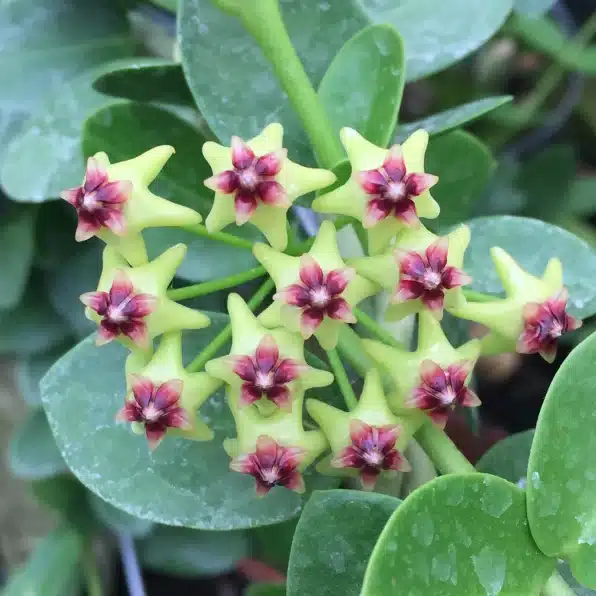
What is the Hoya Cumingiana Plant?
Hoya cumingiana is a species of tropical plant belonging to the family Apocynaceae. It is native to the Philippines, Java, and Borneo where it grows naturally on trees in forested areas as an epiphytic vine.
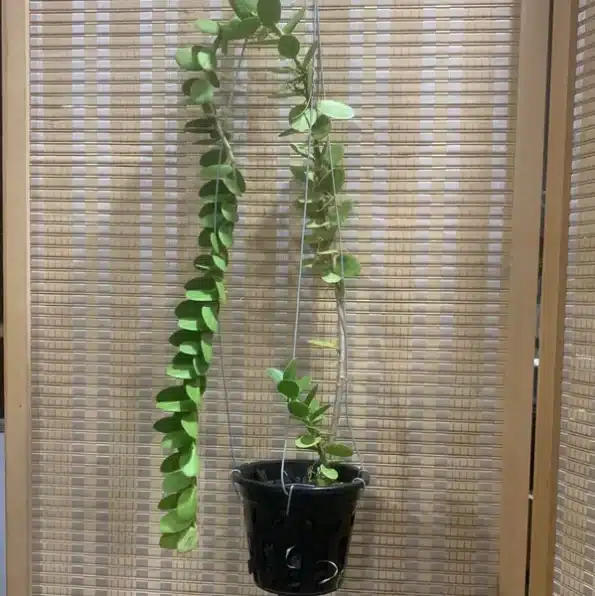
One of the most distinctive features of this Hoya plant is its fragrant flowers. Small, white flowers with a pink or maroon center, arranged in clusters that bloom throughout the year. This hardy, fast-growing succulent is a great beginner's choice.

Hoya cumingiana received its name after Hugh Cuming, a British collector who traveled extensively in the Philippines in the mid-19th century.
Hoya Cumingiana Plant Basics:
| Common Name: | Bush Hoya, Cumings Hoya, porcelain flower wax plant |
| Botanical Name: | Hoya cumingiana |
| Plant Type: | evergreen sarmentose species, terrestrial or lithophyte |
| Size: | Mature plants(5-10 years old) can reach 7 ft tall and 3 ft wide |
| Light: | Bright indirect light |
| Soil: | Well draining and pH neutral |
| Water: | Deepwater them allow to dry at the surface |
| Vulnerabilities: | Root rot, aphids, mealy bugs, |
| USDA Growing Zones: | 10,11,12 |
Basic Plant Care for Hoya Cumingiana
To ensure the health and longevity of your Hoya cumingiana plant, there are a few basics of care to keep in mind. Here are some basic plant care tips to help you maintain a thriving Cumingiana.
Type of Soil
Hoya cumingiana prefers a well-draining soil mix that is rich in organic matter. A good soil mix for this plant can be made by combining equal parts of peat moss, perlite, cactus, and orchid mixture. Sandy-type soils that are neutral to slightly alkaline are your best choice.
It is important to avoid using heavy or clay soils, which can retain too much moisture and can possibly lead to root rot.

Amount of Water
When watering Hoya cumingiana, it is important to strike a balance between keeping the soil moist and avoiding overwatering. A good general rule to follow would be to water your plant when the top inch of soil feels dry to the touch.
During the warmer dryer seasons, you may need to water your Hoya cumingiana more frequently. During the dormant season, which typically occurs in fall and winter, you can reduce watering and allow the soil to dry out slightly between waterings.
When watering, use room temperature or tepid water and pour it slowly and evenly around the base of the plant, being careful not to get water on the leaves or flowers, which can promote fungal growth.
Amount of Light
Hoya cumingiana prefers bright, indirect light, making it a great choice for a spot near a window with filtered light. Avoid exposing the plant to direct sunlight, which can scorch its leaves. Early morning or evening sun won't be a problem.
If you are growing Hoya Cumingiana outdoors, it’s best to keep it in a shady spot.
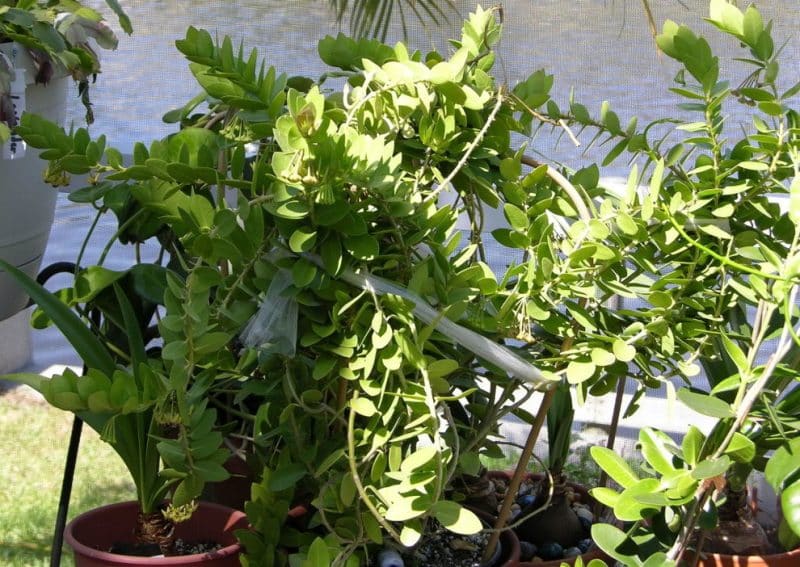
Temperature & Humidity Levels
Hoya cumingiana prefers warm and humid environments, with ideal temperatures ranging from 60-80°F (15-27°C). Anything below 50 °F will probably be the end of your plant. In terms of humidity, Hoya cumingiana prefers high levels of humidity, between 50-60% if possible.
To increase humidity, you can place a humidifier near the plant or you can create a microclimate by grouping your plants and raising the humidity that way. A great reason to collect more plants.
Another option to raise the humidity is to add pebbles underneath the pot and add water making sure the water does not touch the bottom of the pot and create a waterlog issue.
Misting the air around the plants is a good way to raise the humidity levels in the room as well.
Fertilizing the Plant
Hoya cumingiana benefits from regular fertilization during the growing season, which typically occurs in spring and summer. A balanced, water-soluble fertilizer with a ratio of 20-20-20 or 10-10-10 can be used, diluted to half strength, every two to four weeks.
Avoid fertilizing during the dormant season, which typically occurs in fall and winter, as the plant's growth slows down and it may not be able to absorb the nutrients as well. It is also important to avoid over-fertilizing, as this can lead to salt build-up in the soil and damage the plant.
How to Prune Hoya Cumingiana
To keep your Hoya cumingiana looking neat and healthy, pruning is necessary. Regular pruning can promote bushier growth and more abundant flowering. If your plant has any diseased or fungal parts, trim the foliage to remove the damaged parts. Be careful not to remove the peduncles when pruning.
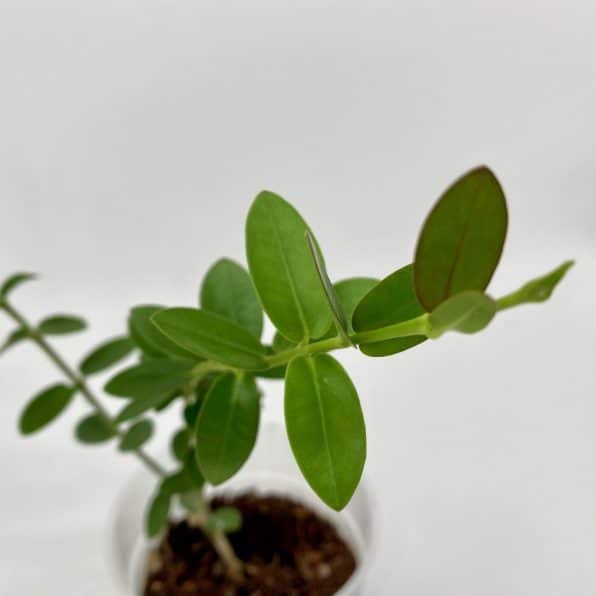
Note: The peduncle is the stem that supports the cluster of flowers.
How to Propagate Hoya Cumingiana
There are three ways to propagate Hoya Cumingiana:
- soil propagation
- water propagation
- perlite propagation
For soil propagation, place the cutting in moist sphagnum moss in a well-lit area and monitor for growth. Once the root system is well-established, transfer the cutting to a potting mixture.
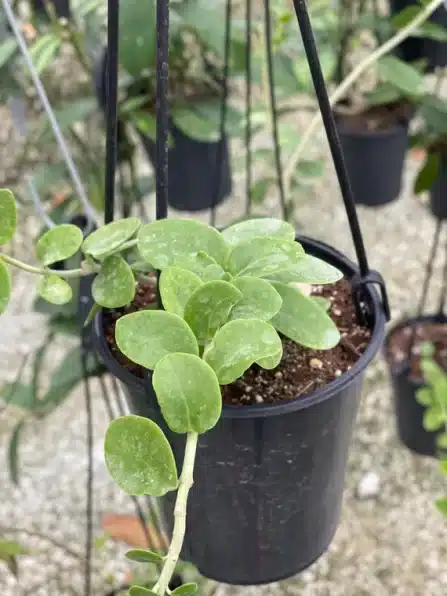
For water propagation, place the cutting in water with only the node submerged, not the leaves. Change the water every 2-3 days to prevent bacterial growth and root rot. Once roots have emerged, transfer the cutting to a potting mixture.
For perlite propagation, bury the cutting in perlite and cover it with a plastic bag to trap humidity. Place the container in a bright area away from direct sunlight, and once roots have established, transfer to a potting mixture.
Regardless of the propagation method, it's important to monitor the plant for growth and adjust care as needed. With proper care, your propagated Hoya cumingiana will thrive and bring joy to your space.
Other Small Leaf Hoya Varieties
Hoya is a diverse genus of plants, with over 200 known species. Some other small leaf Hoya varieties that share similar traits and needs with Hoya cumingiana include:
Hoya compacta: Also known as the Hindu rope plant, this Hoya variety has tightly curled leaves that give it a distinctive appearance. It prefers bright, indirect light and well-draining soil.
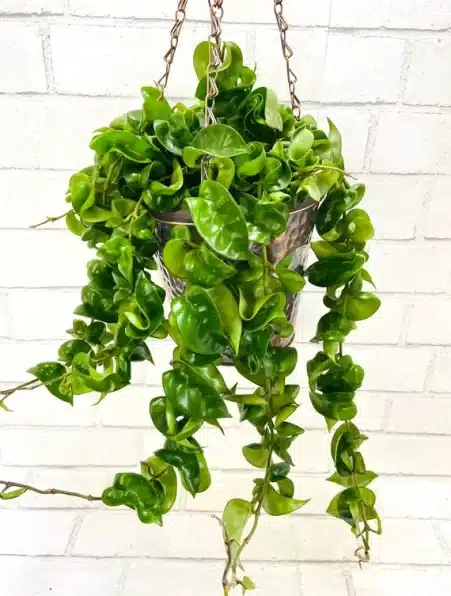
Hoya carnosa: This Hoya variety is also known as the wax plant, and it has shiny, waxy leaves that are similar in size and shape to those of Hoya cumingiana. It prefers bright, indirect light and moderate watering.

Hoya pubicalyx: This Hoya variety has elongated, lance-shaped leaves and produces clusters of pink or purple flowers. It prefers bright, indirect light and well-draining soil.

Hoya kerrii: This Hoya variety is often referred to as the sweetheart plant due to its heart-shaped leaves. It prefers bright, indirect light and well-draining soil.
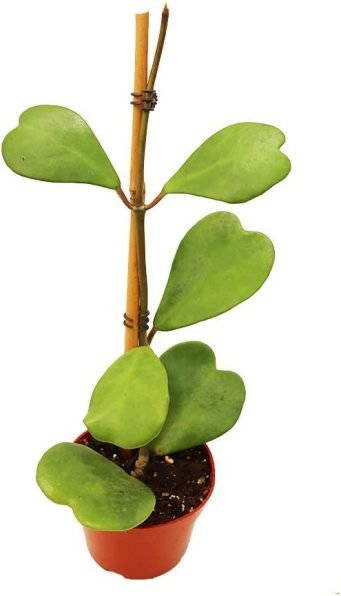
Hoya australis: This Hoya variety has small, oval-shaped leaves and produces clusters of fragrant white or pink flowers. It prefers bright, indirect light and well-draining soil.
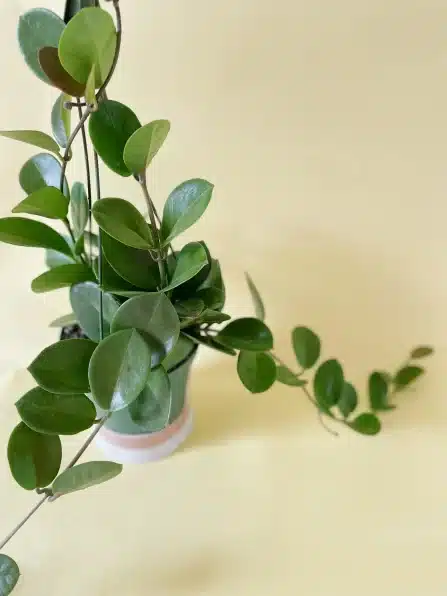
All of these small leaf Hoya varieties have similar care requirements to Cumingiana and make great additions to any indoor plant collection.
Common Problems for Hoya Cumingiana
Hoya Cumingiana is generally a low-maintenance plant, but it may encounter some problems such as pests, diseases, and environmental stress. Here are some common issues to watch out for.
Growing
Hoya Cumingiana may also be susceptible to fungal and bacterial diseases, such as leaf spot, powdery mildew, and root rot.
To prevent these diseases, avoid overwatering and ensure that the plant has good air circulation. If you notice any signs of disease, prune away the infected parts and treat the plant with a fungicide or bactericide as recommended by a horticulturist.
Diseases
Hoya cumingiana is a hardy plant, but it is still susceptible to some diseases. One of the most common diseases that affect this plant is root rot, which occurs due to overwatering or poor soil drainage.
Symptoms of root rot include yellowing leaves, wilting, and a foul odor emanating from the soil. If left untreated, root rot can kill the plant. To prevent root rot, make sure the plant is planted in well-draining soil and water it accordingly.
Another disease that affects Hoya cumingiana is powdery mildew, a fungal infection that causes a white powdery substance to appear on the leaves.

Leaf spot is another fungal disease that affects the Cumingiana. This disease is characterized by circular spots that appear on the leaves. If left untreated, the spots will spread, causing the leaves to wither and die.
To prevent leaf spot, avoid watering the plant from above and remove any infected leaves immediately to prevent the spread of the disease. Ensure that the plant is planted in well-draining soil and has good air circulation.
Pests
Hoya Cumingiana can be affected by a variety of pests, including mealybugs, spider mites, scale insects, and aphids. Mealybugs are the most common pests that affect this plant. They look like white cottony masses and feed on the plant's sap, causing stunted growth and yellowing of leaves.
- Spider mites are tiny arachnids that spin webs on the plant and suck the sap, causing the leaves to turn yellow and drop.
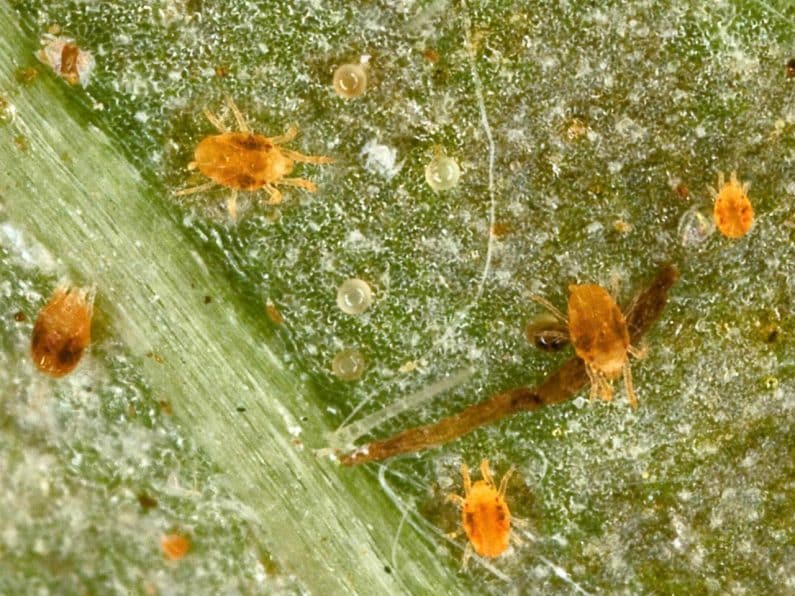
- Scale insects are small, oval-shaped insects that stick to the leaves and stem and feed on the plant's sap, causing it to wilt and die.
- Aphids are small insects that can be green, yellow, or black and feed on the plant's sap, causing yellowing and curling of leaves.
To prevent these pests, keep your plant clean by wiping the leaves regularly with a damp cloth. You can also use insecticidal soap or neem oil to kill the pests.
Hoya Cumingiana Medicinal Uses
Some species of Hoya, have been traditionally used for medicinal purposes, where they have been used to create skin soothing preparations that help alleviate inflammation and burns.
Additionally, the extract of H. carnosa flowers has been found to possess collagen-promoting and lipid-producing properties that can be used in skincare products for their potential anti-aging and anti-wrinkle properties. The extract of H. carnosa leaves has also been shown to exhibit antibacterial properties.
Hoya parasitica (Wall.) is widely utilized in traditional medicine to treat various ailments such as rheumatism, kidney problems, jaundice, urinary tract disorders, fever, and pain. It is important to note that while these medicinal uses have been reported anecdotally, further research is required to establish their efficacy and safety. It is recommended to consult with a healthcare professional before using Hoya plants for medicinal purposes.
Disclaimer: The information provided in this article about the medicinal uses of Hoya Cumingiana is for educational purposes only and is not intended as a substitute for professional medical advice, diagnosis, or treatment. The author and publisher of this article are not responsible for any adverse effects or consequences resulting from the use of any suggestions or procedures described in this article. It is essential to consult with a qualified healthcare provider before using any herbal remedy or plant for medicinal purposes.
FAQ’s
Can I buy Hoya Cumingiana online?
Yes, you can find Hoya cumingiana in online stores such as Amazon, and Etsy as well as other online plant shops.
What is a Hoya Cumingiana Albo?
Hoya Cumingiana is a vine-like epiphyte succulent native to Java, Borneo and the Philippines. A flowering favorite of many house plant collectors.
Will a Hoya Cumingiana flower?
Yes, Hoya Cumingiana will flower once they have matured, usually between 2-3 years.

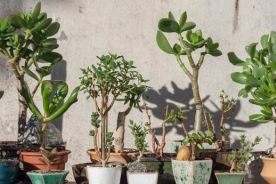



No Comments